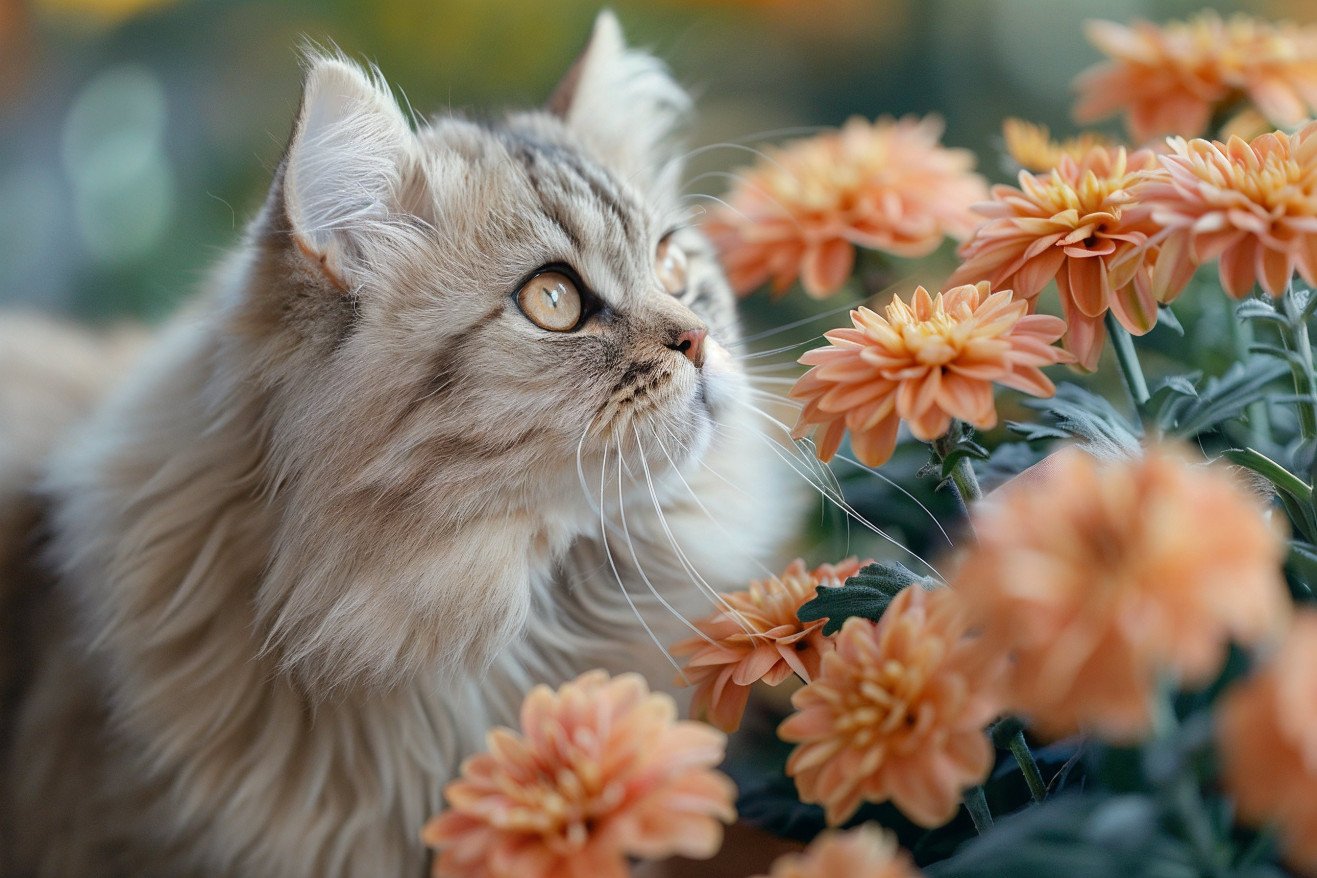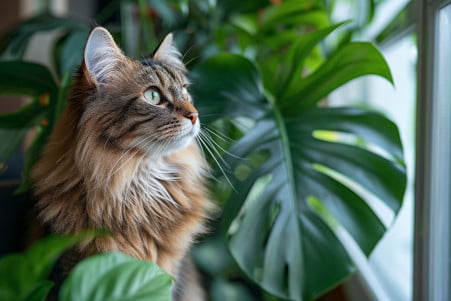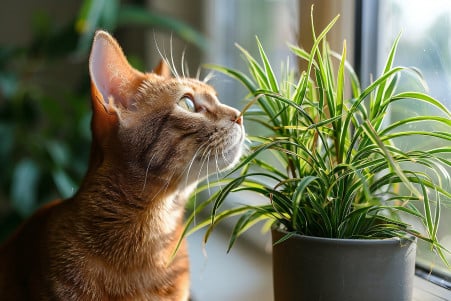Are Mums Toxic to Cats? Here's What the Studies Say
25 March 2024 • Updated 25 March 2024

If you're a cat owner, you may have wondered whether mums (chrysanthemums), the classic autumnal flower, are toxic to your pet. Mums are toxic to cats, and when cats eat them, they can experience symptoms like vomiting, incoordination, and skin irritation due to the sesquiterpene lactones and pyrethrins in mums.
This article will review the scientific research on the toxicity of mums to cats, including papers written by veterinary toxicologists and studies that have looked at the chemical makeup of mums. By reviewing this research, we hope to give cat owners a better idea of the risks and what to look for if their cat eats a part of a mum plant.
Are mums toxic to cats?
Signs of Chrysanthemum Poisoning in Cats and When to Get Help
The Pet Poison Helpline notes that signs of chrysanthemum poisoning in cats will typically start to show up within two hours of the cat eating the plant. These signs can include vomiting, diarrhea, skin rashes, and lethargy. Meanwhile, Catster explains that if a cat has ingested a large amount of the mum plant, neurological signs like ataxia, CNS depression, and seizures can occur if the cat isn't treated.
Although cats may not always eat enough to be fatal, WFMYNews2 explains that chrysanthemum poisoning can be fatal in severe cases, especially if the cat doesn't get veterinary care quickly. Even if the cat's initial signs of poisoning are mild, it's important to get them to the vet right away. According to Wag Walking, poisoning is always considered an emergency and should be treated by a vet to prevent sudden worsening or long-term issues.
First Aid and Veterinary Care for Mum Poisoning
If a cat eats mums, the first thing to do is to attempt to identify the plant and remove any remaining plant material from the cat's mouth or the surrounding area, according to JustAnswer. After that, it's important to call a veterinarian or pet poison control hotline immediately to get advice on the next steps, which may include vomiting or activated charcoal, according to PetMD.
At the vet's office, treatment for mum poisoning will often involve those same methods to rid the cat's body of the toxins, as well as supportive care such as IV fluids, according to the WagWalking guide on mother of millions plant poisoning.
Depending on the level of poisoning, the cat may need to stay at the vet's office for observation and monitoring until the symptoms are completely gone. It's important to get the cat to the vet as soon as possible because mum toxicity can lead to life-threatening issues if it's not treated.
How to Keep Cats Away From Mums
The best way to avoid mum toxicity in cats is to keep the plants out of reach or remove them from areas accessible to cats. According to Catster, physical barriers like closed doors, baby gates, or plant covers can be effective ways to keep cats away from mums. In addition, offering safe plants like cat grass or catnip can give cats a healthy outlet for their natural chewing and grazing instincts, according to The Spruce.
It's also important to closely monitor cats when mums are in the home. According to JustAnswer, if a cat can't be deterred from eating mums, it may be necessary to get rid of the plants. Pet owners can take these steps to make sure their home is safe and cat-friendly, and they can still enjoy mums without putting their cat's health at risk.
More Common Houseplants That Are Toxic to Cats
Mums aren't the only common houseplants that are toxic to cats. According to the Preventive Vet, other popular indoor plants like lilies, aloe vera, sago palms, and philodendrons can also be dangerous if cats decide to nibble on them.
The Spruce notes that these plants can cause a variety of symptoms in cats, including mouth irritation and vomiting, as well as more serious problems such as seizures and organ damage. The severity of the symptoms can vary based on the plant and the amount that's been ingested.
As the International Cat Care points out, it's important for cat owners to make sure they know whether any plants they're considering bringing into their home are safe for cats. This is because even plants that are safe for cats can be toxic, and it's important to make sure that cats are protected from any potential dangers.
Potential Long-Term Effects and Risks of Plant Toxicity
Although many cases of plant toxicity in cats are not fatal, the consumption of some plants, such as lilies and philodendrons, can result in long-term health problems, according to a study in the Journal of the American Veterinary Medical Association. Long-term issues can include kidney failure, gastrointestinal problems, and neurological problems, such as seizures.
According to the Sill, the age, breed, and health of the cat can also impact the severity of plant toxicity. Young cats and cats with pre-existing health issues may be more likely to experience long-term complications from consuming toxic plants.
However, the International Cat Care notes that the quicker the cat receives veterinary treatment and the more quickly the plant is identified, the less likely long-term complications will occur. If treatment is administered early and the cat is given the care they need, organ damage and other long-term issues can be avoided.
How to Make a Safe, Cat-Friendly Plant Space
Although many plants are toxic, there are also many non-toxic plants that cats can live with in the home. To help satisfy your cat's urge to graze, consider providing cat-safe plants like cat grass, wheat grass, or catnip. It's also important to make sure that your cat has plenty of other toys, puzzles, and playtime to keep them from getting bored and turning to your houseplants for entertainment.
With a little planning and some thoughtful choices, both plant and pet owners can enjoy the benefits of indoor plants while keeping their cats safe and happy.


